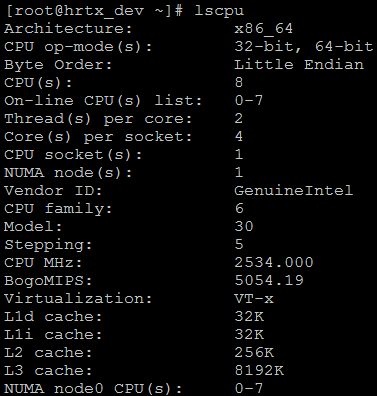By warezhou 2014.11.24
上次通过C扩展为PHP添加coroutine尝试失败之后,由于短期内啃下Zend可能性几乎为零,只能打语言原生能力的主意了。Google之后发现,PHP5.5引入了Generator和Coroutine新特性,于是才有了本文的诞生。
预备知识Generatorfunction my_range($start, $end, $step = 1) { for ($i = $start; $i <= $end; $i += $step) { yield $i; }}foreach (my_range(1, 1000) as $num) { echo $num, "";}/* * 1 * 2 * ... * 1000 */图 1 基于generator的range()实现
$range = my_range(1, 1000);var_dump($range);/* * object(Generator)#1 (0) { * } */var_dump($range instanceof Iterator);/* * bool(true) */图 2 my_range()的实现推测
由于接触PHP时日尚浅,并未深入语言实现细节,所以只能根据现象进行猜测,以下是我的一些个人理解:
包含yield关键字的函数比较特殊,返回值是一个Generator对象,此时函数内语句尚未真正执行Generator对象是Iterator接口实例,可以通过rewind()、html' target='_blank'>current()、next()、valid()系列接口进行操纵Generator可以视为一种“可中断”的函数,而yield构成了一系列的“中断点”Generator类似于车间生产的流水线,每次需要用产品的时候才从那里取一个,然后这个流水线就停在那里等待下一次取操作Coroutine细心的读者可能已经发现,截至目前,其实Generator已经实现了Coroutine的关键特性:中断执行、恢复执行。按照《当C/C++后台开发遇上Coroutine》的思路,借助“全局变量”一类语言设施进行信息传递,实现异步Server应该足够了。
其实相对于swapcontext族函数,Generator已经前进了一大步,具备了“返回数据”的能力,如果同时具备“发送数据”的能力,就再也不必通过那些蹩脚的手法绕路而行了。在PHP里面,通过Generator的send()接口(注意:不再是next()接口),可以完成“发送数据”的任务,从而实现了真正的“双向通信”。
function gen() { $ret = (yield 'yield1'); echo "[gen]", $ret, ""; $ret = (yield 'yield2'); echo "[gen]", $ret, "";}$gen = gen();$ret = $gen->current();echo "[main]", $ret, "";$ret = $gen->send("send1");echo "[main]", $ret, "";$ret = $gen->send("send2");echo "[main]", $ret, "";/* * [main]yield1 * [gen]send1 * [main]yield2 * [gen]send2 * [main] */图 3 Coroutine双向通信示例
作为C/C++系码农,发现“可重入”、“双向通信”能力之后,貌似没有更多奢求了,不过PHP还是比较慷慨,继续添加了Exception机制,“错误处理”机制得到进一步完善。
function gen() { $ret = (yield 'yield1'); echo "[gen]", $ret, ""; try { $ret = (yield 'yield2'); echo "[gen]", $ret, ""; } catch (Exception $ex) { echo "[gen][Exception]", $ex->getMessage(), ""; } echo "[gen]finish";}$gen = gen();$ret = $gen->current();echo "[main]", $ret, "";$ret = $gen->send("send1");echo "[main]", $ret, "";$ret = $gen->throw(new Exception("Test"));echo "[main]", $ret, "";/* * [main]yield1 * [gen]send1 * [main]yield2 * [gen][Exception]Test * [gen]finish * [main] */图 4 Coroutine错误处理示例
实战演习前面简单介绍了相关的语言设施,那么具体到实际项目中,到底应该如何运用呢?让我们继续《一次失败的PHP扩展开发之旅》描述的场景,借助上述特性实现那个美好的愿望:以同步方式书写异步代码!
第一版初稿<?phpclass AsyncServer { protected $handler; protected $socket; protected $tasks = []; public function __construct($handler) { $this->handler = $handler; $this->socket = socket_create(AF_INET, SOCK_DGRAM, SOL_UDP); if(!$this->socket) { die(socket_strerror(socket_last_error()).""); } if (!socket_set_nonblock($this->socket)) { die(socket_strerror(socket_last_error()).""); } if(!socket_bind($this->socket, "0.0.0.0", 1234)) { die(socket_strerror(socket_last_error()).""); } } public function Run() { while (true) { $reads = array($this->socket); foreach ($this->tasks as list($socket)) { $reads[] = $socket; } $writes = NULL; $excepts= NULL; if (!socket_select($reads, $writes, $excepts, 0, 1000)) { continue; } foreach ($reads as $one) { $len = socket_recvfrom($one, $data, 65535, 0, $ip, $port); if (!$len) { //echo "socket_recvfrom fail."; continue; } if ($one == $this->socket) { //echo "[Run]request recvfrom succ. data=$data ip=$ip port=$port"; $handler = $this->handler; $coroutine = $handler($one, $data, $len, $ip, $port); $task = $coroutine->current(); //echo "[Run]AsyncTask recv. data=$task->data ip=$task->ip port=$task->port timeout=$task->timeout"; $socket = socket_create(AF_INET, SOCK_DGRAM, SOL_UDP); if(!$socket) { //echo socket_strerror(socket_last_error()).""; $coroutine->throw(new Exception(socket_strerror(socket_last_error()), socket_last_error())); continue; } if (!socket_set_nonblock($socket)) { //echo socket_strerror(socket_last_error()).""; $coroutine->throw(new Exception(socket_strerror(socket_last_error()), socket_last_error())); continue; } socket_sendto($socket, $task->data, $task->len, 0, $task->ip, $task->port); $this->tasks[$socket] = [$socket, $coroutine]; } else { //echo "[Run]response recvfrom succ. data=$data ip=$ip port=$port"; if (!isset($this->tasks[$one])) { //echo "no async_task found."; } else { list($socket, $coroutine) = $this->tasks[$one]; unset($this->tasks[$one]); socket_close($socket); $coroutine->send(array($data, $len)); } } } } }}class AsyncTask { public $data; public $len; public $ip; public $port; public $timeout; public function __construct($data, $len, $ip, $port, $timeout) { $this->data = $data; $this->len = $len; $this->ip = $ip; $this->port = $port; $this->timeout = $timeout; }}function RequestHandler($socket, $req_buf, $req_len, $ip, $port) { //echo "[RequestHandler] before yield AsyncTask. REQ=$req_buf"; list($rsp_buf, $rsp_len) = (yield new AsyncTask($req_buf, $req_len, "127.0.0.1", 2345, 1000)); //echo "[RequestHandler] after yield AsyncTask. RSP=$rsp_buf"; socket_sendto($socket, $rsp_buf, $rsp_len, 0, $ip, $port);}$server = new AsyncServer(RequestHandler);$server->Run();?>
代码解读:
为了便于说明问题,这里所有底层通讯基于UDP,省略了TCP的connect等繁琐细节AsyncServer为底层框架类,封装了网络通讯细节以及协程切换细节,通过socket进行coroutine绑定RequestHandler为业务处理函数,通过yield new AsyncTask()实现异步网络交互第二版完善第一版遗留问题:
异步网络交互的timeout未实现,仅预留了接口参数yield new AsyncTask()调用方式不够自然,略感别扭<?phpclass AsyncServer { protected $handler; protected $socket; protected $tasks = []; protected $timers = []; public function __construct(callable $handler) { $this->handler = $handler; $this->socket = socket_create(AF_INET, SOCK_DGRAM, SOL_UDP); if(!$this->socket) { die(socket_strerror(socket_last_error()).""); } if (!socket_set_nonblock($this->socket)) { die(socket_strerror(socket_last_error()).""); } if(!socket_bind($this->socket, "0.0.0.0", 1234)) { die(socket_strerror(socket_last_error()).""); } } public function Run() { while (true) { $now = microtime(true) * 1000; foreach ($this->timers as $time => $sockets) { if ($time > $now) break; foreach ($sockets as $one) { list($socket, $coroutine) = $this->tasks[$one]; unset($this->tasks[$one]); socket_close($socket); $coroutine->throw(new Exception("Timeout")); } unset($this->timers[$time]); } $reads = array($this->socket); foreach ($this->tasks as list($socket)) { $reads[] = $socket; } $writes = NULL; $excepts= NULL; if (!socket_select($reads, $writes, $excepts, 0, 1000)) { continue; } foreach ($reads as $one) { $len = socket_recvfrom($one, $data, 65535, 0, $ip, $port); if (!$len) { //echo "socket_recvfrom fail."; continue; } if ($one == $this->socket) { //echo "[Run]request recvfrom succ. data=$data ip=$ip port=$port"; $handler = $this->handler; $coroutine = $handler($one, $data, $len, $ip, $port); if (!$coroutine) { //echo "[Run]everything is done."; continue; } $task = $coroutine->current(); //echo "[Run]AsyncTask recv. data=$task->data ip=$task->ip port=$task->port timeout=$task->timeout"; $socket = socket_create(AF_INET, SOCK_DGRAM, SOL_UDP); if(!$socket) { //echo socket_strerror(socket_last_error()).""; $coroutine->throw(new Exception(socket_strerror(socket_last_error()), socket_last_error())); continue; } if (!socket_set_nonblock($socket)) { //echo socket_strerror(socket_last_error()).""; $coroutine->throw(new Exception(socket_strerror(socket_last_error()), socket_last_error())); continue; } socket_sendto($socket, $task->data, $task->len, 0, $task->ip, $task->port); $deadline = $now + $task->timeout; $this->tasks[$socket] = [$socket, $coroutine, $deadline]; $this->timers[$deadline][$socket] = $socket; } else { //echo "[Run]response recvfrom succ. data=$data ip=$ip port=$port"; list($socket, $coroutine, $deadline) = $this->tasks[$one]; unset($this->tasks[$one]); unset($this->timers[$deadline][$one]); socket_close($socket); $coroutine->send(array($data, $len)); } } } }}class AsyncTask { public $data; public $len; public $ip; public $port; public $timeout; public function __construct($data, $len, $ip, $port, $timeout) { $this->data = $data; $this->len = $len; $this->ip = $ip; $this->port = $port; $this->timeout = $timeout; }}function AsyncSendRecv($req_buf, $req_len, $ip, $port, $timeout) { return new AsyncTask($req_buf, $req_len, $ip, $port, $timeout);}function RequestHandler($socket, $req_buf, $req_len, $ip, $port) { //echo "[RequestHandler] before yield AsyncTask. REQ=$req_buf"; try { list($rsp_buf, $rsp_len) = (yield AsyncSendRecv($req_buf, $req_len, "127.0.0.1", 2345, 3000)); } catch (Exception $ex) { $rsp_buf = $ex->getMessage(); $rsp_len = strlen($rsp_buf); //echo "[Exception]$rsp_buf"; } //echo "[RequestHandler] after yield AsyncTask. RSP=$rsp_buf"; socket_sendto($socket, $rsp_buf, $rsp_len, 0, $ip, $port);}$server = new AsyncServer(RequestHandler);$server->Run();?>代码解读:
借助PHP内置array能力,实现简单的“超时管理”,以毫秒为精度作为时间分片封装AsyncSendRecv接口,调用形如yield AsyncSendRecv(),更加自然添加Exception作为错误处理机制,添加ret_code亦可,仅为展示之用性能测试测试环境
郑重声明:本文版权归原作者所有,转载文章仅为传播更多信息之目的,如作者信息标记有误,请第一时间联系我们修改或删除,多谢。
新闻热点
疑难解答